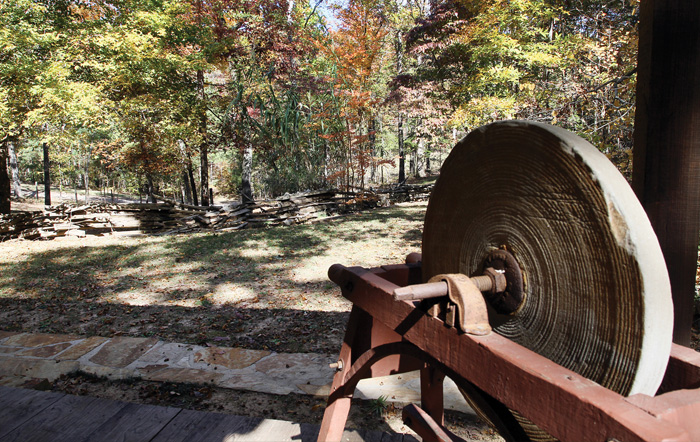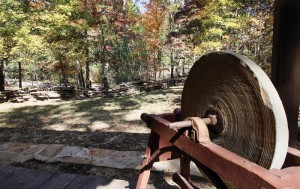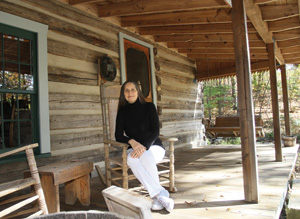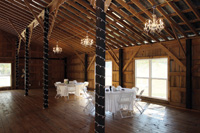By Elaine Hobson Miller
Photos by Jerry Martin
The tall, chubby guy in overalls and white tee-shirt runs up to the airshow emcee and in a drawl as Southern as coon dogs and camouflage starts babbling about redeeming a flight instruction coupon. Trying to get rid of the man, who claims he’s Clem Cleaver from Alabama, the emcee motions him toward a little yellow airplane. He tells the man standing beside it to give the guy a demo. But when Clem climbs aboard, he “accidentally” takes off on a wibbly-wobbly solo flight that culminates with his landing atop a pickup truck that’s doing 55 miles per hour down the runway.
It takes skill to do that. Not just the skill of landing on a moving target, but the skill of making it appear that you don’t know what you’re doing. Make no mistake about it, Greg Koontz knows what he’s doing. An aerobatics pilot, Master Flight Instructor, aerobatic pilot evaluator and the 2011 recipient of the FAA’s Flight Instructor of the Year for the Southern Region, this St. Clair County resident got his student pilot’s certificate three days before getting his driver’s license. He’s been flying high ever since.
“I learned to fly in 1969, and soloed before I got my driver’s license,” says Koontz. “At 17, I got my pilot’s license. My first plane was a 1946 Piper Cub that I rebuilt in my mom’s basement.”
The Clem Cleaver role is part of a comedy routine Greg and his Alabama Boys perform at air shows throughout the country. He developed this act in 2005, but he has been performing aerobatic maneuvers since he was a teenager. His father was a corporate pilot and took 7-year-old Koontz to an air show. At the end of the show, he announced, “I want to be an air show pilot.”
At 18, Koontz went to work for Moser’s Aero Sport Inc., in St. Augustine, Fla. His main job was flight instructor, but at 19, he began performing in Colonel Moser’s Flying Circus, flying air shows all over the Southeast and parts of the Caribbean. That’s where he learned the truck-top landing. “Jim & Ernie Moser were inducted into the Air Show Hall of Fame in Las Vegas in November (2011) by the International Council of Air Shows (ICAS),” he says. “It makes me proud that I was part of that operation.”
He spent 10 years running flight schools and charter businesses before taking a job as corporate pilot for McGriff, Seibels & Williams, Birmingham insurance agents. He held that position for 20 years, doing air shows on the side.
 In 1995, he started coming to St. Clair County to do aerobatic maneuvers at a model airplane show the late Bud Caddell held every year on Slasham Road. When Caddell’s son stopped holding the shows about two years ago, Koontz held an open-house for some of his flying buddies. Strangers got wind of the event, mistook it for an air show and started showing up.
In 1995, he started coming to St. Clair County to do aerobatic maneuvers at a model airplane show the late Bud Caddell held every year on Slasham Road. When Caddell’s son stopped holding the shows about two years ago, Koontz held an open-house for some of his flying buddies. Strangers got wind of the event, mistook it for an air show and started showing up.
“I fed barbecue to 400 people this year,” Koontz says of his October lawn party. “With so many strangers and the cost of feeding folks, I may have to start charging and actually calling it an air show.”
The festivities take place on Koontz’s little piece of heaven on Slasham Road. When he and his wife, Cora, started coming out for the Caddell shows, they thought it was a beautiful area. In 1999, Bob Dugger sold them a corner of some land he had just purchased, along with rights to Dugger’s private grass runway. They built the hangar in 2002, and in 2004, after the last of their two children headed off to college, they built their house. They opened Sky Country Bed & Breakfast in 2005, using two spare bedrooms for their fly-in guests.
“I have the only aerobatic school with a B&B on a private grass air strip that I know about,” Koontz says. He teaches several types of aerobatic courses, specializing in beginners, and stays booked six to eight weeks in advance. “People who buy an aerobatic plane and want to expand their capabilities will take my complete course, but lots of people take aerobatics just to improve or enhance their flying abilities,” he says.
About 80 pilots a year train under Koontz at his headquarters. Hearing about him from air shows and the Internet, they come from all over the U.S. and around the world, including Spain, Portugal, Germany, South Africa, Argentina and the Philippines. The courses run from two to five days, with most pilots from outside the U.S. staying for five.
“The fun of doing this business is sitting around the dinner table talking with folks,” he says. He not only trains pilots, but does his own basic maintenance (he’s a licensed aircraft mechanic), all the cooking and grocery shopping, too. “My wife doesn’t cook,” he explains, not appearing the least bit bothered by this. After all, she works a full-time job in Birmingham. They were married in 1975, after he taught her to fly in 1974.
Koontz holds aerobatics clinics worldwide, in places like South Africa, El Salvador, Guatemala, Honduras, Canada and all over the U.S., including Alaska and Hawaii. He did an air show a few years ago in the United Arab Emirates, and he’s helping establish Portugal’s first aerobatics school.
He’s also an aerobatics competency evaluator. Aerobatic pilots start performing at 800 feet above ground, and must be evaluated every time they want to certify to fly at a lower altitude. In addition, the Federal Aviation Administration (FAA) requires aerobatic pilots to be re-evaluated annually and gave that task to ICAS. Koontz is chairman of the national committee that does this, the ACE (aerobatic competency evaluators) committee, managing a nationwide group of evaluators from every state.
Three airplanes dock in his hangar today, including a red Super Decathlon built by American Champion Aircraft of Wisconsin and emblazoned with the names of 14 sponsors. He also has a 1941 Piper Cub and a 1939 clipped-wing Cub. He uses all of those planes when he trains pilots and sometimes uses the pilots’ own aircraft. He recently purchased a Cessna 182 that he calls his traveling plane. It has four seats — room for Greg, Cora and two guests. “I always promised we’d get a traveling plane, one to take trips in, rather than to do tricks in,” he says.
The difference between a “traveling plane” and an aerobatic plane is more than just its seating capacity, however. An aerobatic plane is aerodynamically designed to do maneuvers and structurally designed to handle the G-forces they encounter.
Koontz performs in 20 air shows a year, flying to them in his Super Decathlon with one of the Alabama Boys. The remainder of the troupe, which includes son, James, Steven Smith, Fred Masterson, Tommy Foster and Bob Dugger, travels in the pickup that Koontz lands on during their routine. Not all of the Boys go to every show. The truck pulls a trailer carrying another yellow Piper Cub, its wings separated from the body and stowed on the inside walls of the trailer, like a dismembered butterfly. Koontz uses it for his comedy act, but flies the Super Decathlon for his aerobatics.
“Aerobatics is a very old, traditional act that has been around for many, many years,” he says. “I traced it back to the 1930s to a man named Mike Murphy. All aerobatics today are pretty much the same as Murphy invented, but with individual twists.”
Fellow aerobatics performer Patty Flagstaff of St. Augustine, Fla., herself a six-time member of the U.S. Aerobatic Team and the first woman to win the title of U.S. National Aerobatics Champion, has known Koontz for 15 to 20 years. She has nothing but praise for his talents.
“He’s a real pro, and I’ve never met anybody who doesn’t think highly of him,” she says. “He’s very well liked and he’s a really, really entertaining showman. I don’t do a lot of training because I don’t have a training plane, and I’m very careful who I send people to for instruction. But I’ve sent a lot of people to Greg, including a relative and one of my best friends.”
Like Patty, Koontz flies for the adventure, the freedom and the challenge. “Obviously, it’s a big thrill, being way off the ground like that, but it’s also the accomplishment that I enjoy,” he says. “It takes years and years to get better at it, and there’s always a new challenge.”
The entertainment component fascinates him, too. It’s a niche in aviation only a few people fill. “I like entertaining people. It’s very gratifying to me to land and have hundreds of people wanting my autograph. It’s fun to have that attention because I did a good job of entertaining.”
Aerobatics is a dangerous sport, he’ll admit that. He has lost five friends from air show crashes this year.
“That’s the secret in this business,” he says, “Don’t hit the ground.”

















































































